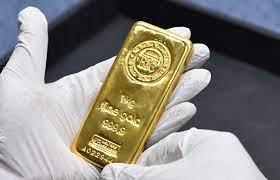In recent years, breast fat grafting in Dubai cosmetic procedures have evolved significantly, offering individuals more natural and long-lasting options for enhancing their appearance. One such innovative procedure gaining popularity is Breast fat transfer in Dubai, especially prominent in cosmopolitan centers like Dubai. This technique not only provides an alternative to traditional breast implants but also utilizes the patient's own fat for augmentation, promising a more natural look and feel.
Understanding Breast Fat Transfer
Breast fat transfer, also known as autologous fat grafting to the breasts, involves two primary steps: liposuction to harvest fat from donor areas like the abdomen or thighs, and then transferring this fat to the breasts to enhance their volume and shape. This method appeals to many due to its dual benefit of contouring unwanted fat from problem areas while simultaneously augmenting the breasts without foreign implants.
Rising Popularity in Dubai
Dubai, known for its advanced medical facilities and skilled cosmetic surgeons, has seen a surge in demand for breast fat transfer procedures. The multicultural environment and emphasis on natural beauty make it an ideal location for individuals seeking personalized cosmetic enhancements. Moreover, the procedure's appeal lies in its potential for achieving subtle yet significant changes that align with diverse cultural and aesthetic preferences.
Before and After Photos
Before and after photos can provide a visual representation of what to expect from breast fat transfer. Reviewing these images can help you visualize potential outcomes and make informed decisions about the procedure.
Long-Term Results: What to Expect
-
Natural Look and Feel: Unlike implants, which can sometimes feel artificial, breast fat transfer offers a more natural look and feel because it uses the patient's own fat tissue. Over time, the transferred fat integrates with the existing breast tissue, creating a harmonious augmentation.
-
Potential for Revision: While fat transfer is generally considered long-lasting, some patients may opt for touch-up sessions over the years to maintain their desired volume and shape. These touch-ups are often less invasive than the initial procedure and can be tailored to individual preferences.
-
Safety and Satisfaction: When performed by a skilled and experienced surgeon in a reputable clinic, breast fat transfer is a safe procedure with high patient satisfaction rates. Dubai's stringent regulations ensure that patients receive quality care and follow-up support, contributing to positive long-term outcomes.
Considerations and Limitations
-
Suitability: Not everyone is a candidate for breast fat transfer; factors such as breast size goals, existing breast tissue, and overall health play crucial roles in determining candidacy.
-
Variable Results: Individual results can vary based on factors like fat retention rates, post-operative care, and lifestyle choices. Patients should have realistic expectations and maintain open communication with their surgeon throughout the process.
Average Cost in Dubai
The breast fat transfer cost in Dubai can vary widely based on the factors mentioned above. On average, patients can expect to pay between AED 18000 to AED 25000. This range includes the surgeon's fees, anesthesia, facility charges, and post-operative care. It's important to note that prices can fluctuate based on the specifics of the procedure and the individual needs of the patient.
Conclusion
In conclusion, the long-term results of breast fat transfer in Dubai are promising for individuals seeking a natural and effective method of breast augmentation. As with any cosmetic procedure, thorough research and consultation with a qualified Best plastic surgeons in Dubai are essential steps towards achieving satisfying outcomes. With Dubai's reputation for cutting-edge cosmetic innovations and a commitment to patient safety, individuals considering breast fat transfer can look forward to enhancing their appearance with confidence and peace of mind.
As the field of cosmetic surgery continues to advance, breast fat transfer stands out as a viable option for those prioritizing both aesthetic enhancement and natural beauty, making Dubai a leading destination for this transformative procedure.
FAQs about breast fat transfer
1. What is breast fat transfer and how does it work?
Breast fat transfer, also known as autologous fat grafting, involves harvesting fat from one part of your body (like abdomen or thighs) through liposuction. This fat is then purified and injected into the breasts to enhance their volume and shape naturally.
2. How long do the results of breast fat transfer last?
The results of breast fat transfer are generally long-lasting. Once the transferred fat establishes a blood supply in the breasts, it tends to remain stable. However, some initial fat absorption can occur in the first few months post-procedure. Maintaining a stable weight and healthy lifestyle can help prolong the results.
3. Am I a suitable candidate for breast fat transfer?
Ideal candidates for breast fat transfer are typically those looking for a modest increase in breast size, prefer natural-looking results, and have enough fat in donor areas for harvesting. Candidates should also be in good overall health with realistic expectations about the procedure.
4. What are the advantages of breast fat transfer compared to breast implants?
Breast fat transfer offers several advantages over traditional implants, including a more natural look and feel, using the body's own tissue, minimal scarring (since it involves small incisions for liposuction), and the potential for simultaneous body contouring in donor areas.
5. What can I expect during the recovery period after breast fat transfer?
Recovery from breast fat transfer is generally quicker than with breast implants. Patients may experience mild swelling, bruising, and discomfort at the liposuction and injection sites, which typically resolves within a few weeks. Most individuals can resume light activities within a few days and return to normal routines within 1-2 weeks, depending on their body's healing process.





